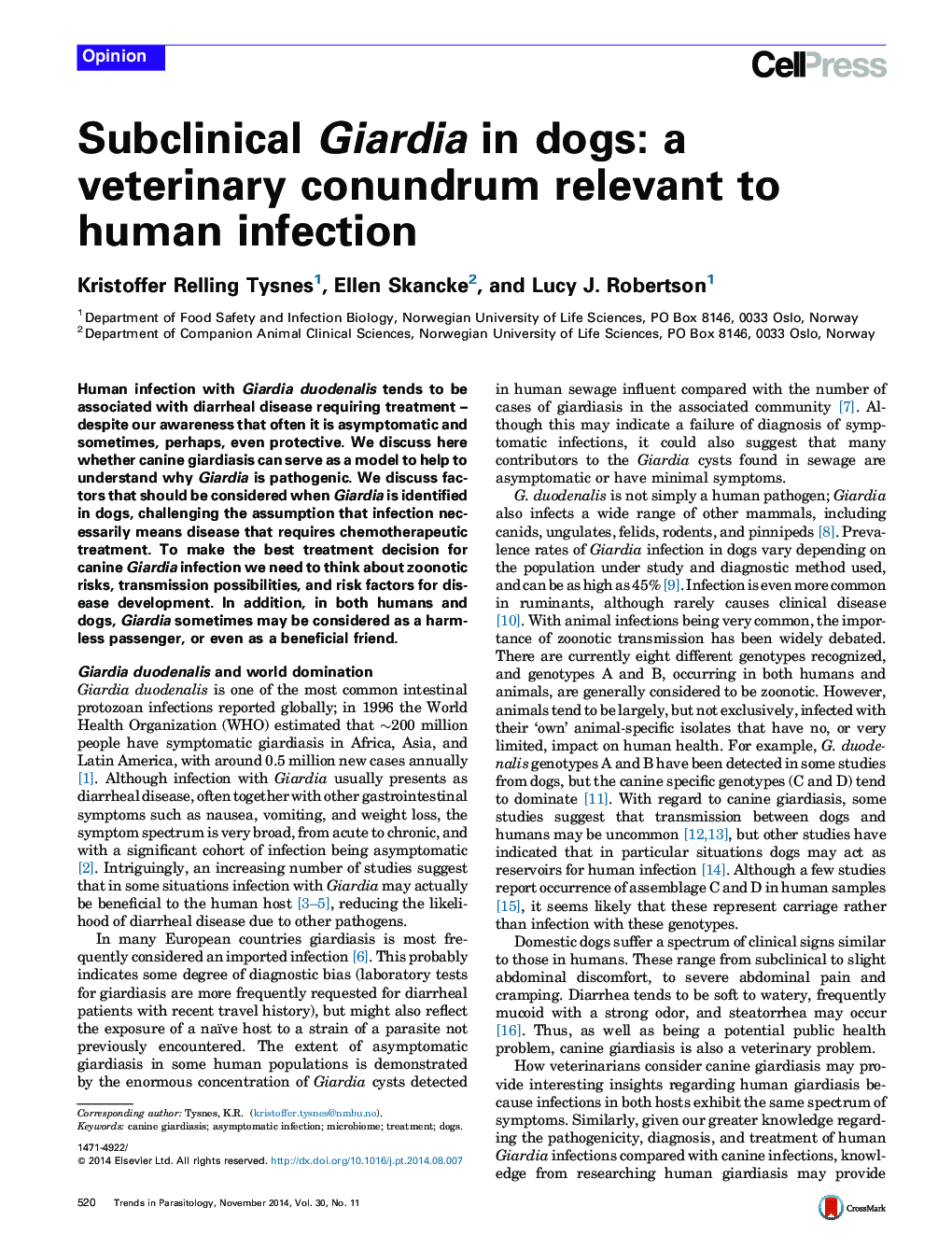| Article ID | Journal | Published Year | Pages | File Type |
|---|---|---|---|---|
| 3423034 | Trends in Parasitology | 2014 | 8 Pages |
•Giardia infections in dogs and humans share key characteristics.•Subclinical Giardia infection is common in both dogs and humans.•Changes in intestinal microbiota may precipitate clinical giardiasis.•Treatment of asymptomatic Giardia infections in dogs requires careful evaluation.
Human infection with Giardia duodenalis tends to be associated with diarrheal disease requiring treatment – despite our awareness that often it is asymptomatic and sometimes, perhaps, even protective. We discuss here whether canine giardiasis can serve as a model to help to understand why Giardia is pathogenic. We discuss factors that should be considered when Giardia is identified in dogs, challenging the assumption that infection necessarily means disease that requires chemotherapeutic treatment. To make the best treatment decision for canine Giardia infection we need to think about zoonotic risks, transmission possibilities, and risk factors for disease development. In addition, in both humans and dogs, Giardia sometimes may be considered as a harmless passenger, or even as a beneficial friend.
